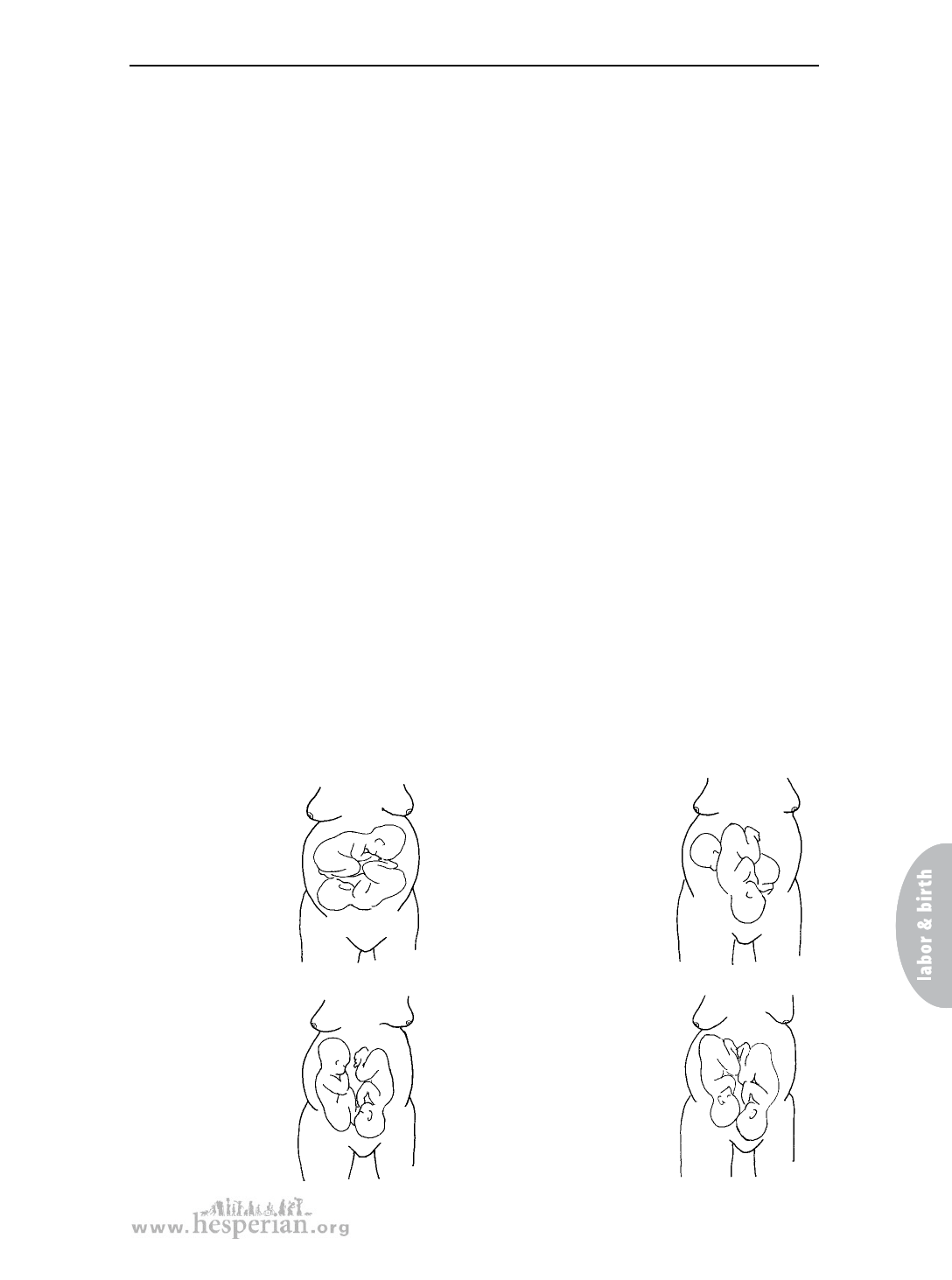
Delivering twins
If you cannot get to a hospital, keep the mother from pushing until you are sure
that the cervix is fully open (see pages 339 to 340). Ask the mother to lie down —
the cord may be less likely to prolapse. Use the instructions on pages 216 to 218
for delivering a frank or complete breech.
Delivering twins
Dangers of twin births
Twin births may go well, but they can be more difficult or dangerous than a
single birth. Twins are more than 3 times as likely to die than other babies, for
these reasons:
• Twins are more likely to be born early, and to be small and weak.
• The cord (especially of the second twin) is more likely to prolapse.
• The placenta of the second twin may start coming off the wall of the womb
after the first twin is born. This can cause dangerous bleeding.
• The mother is more likely to bleed heavily after the birth.
• If the second twin is not born soon after the first, the womb may get an
infection. The second twin may also get an infection.
• One or both twins are more likely to be in a difficult or impossible birth
position. Or the twins may get in each other’s way, making it impossible
for them to be born.
For these reasons, we suggest that twins be born in a medical center. If the
journey is very difficult, feel the mother’s belly to find out the position of the
babies. This will help you know what problems to expect at the birth.
When both babies
are sideways, they
cannot be born
through the vagina.
It is very dangerous
to try to deliver them
at home.
When one head is
down, it is a little
less dangerous to
deliver at home.
If the head-down
baby is born first,
the other baby
may turn.
It is even better if
both babies are up
and down.
But a breech twin
will have the same
dangers as all
breech babies.
It is best if both
babies are
headdown —
but it is still more
dangerous than a
single birth.
219
A Book for Midwives (2010)